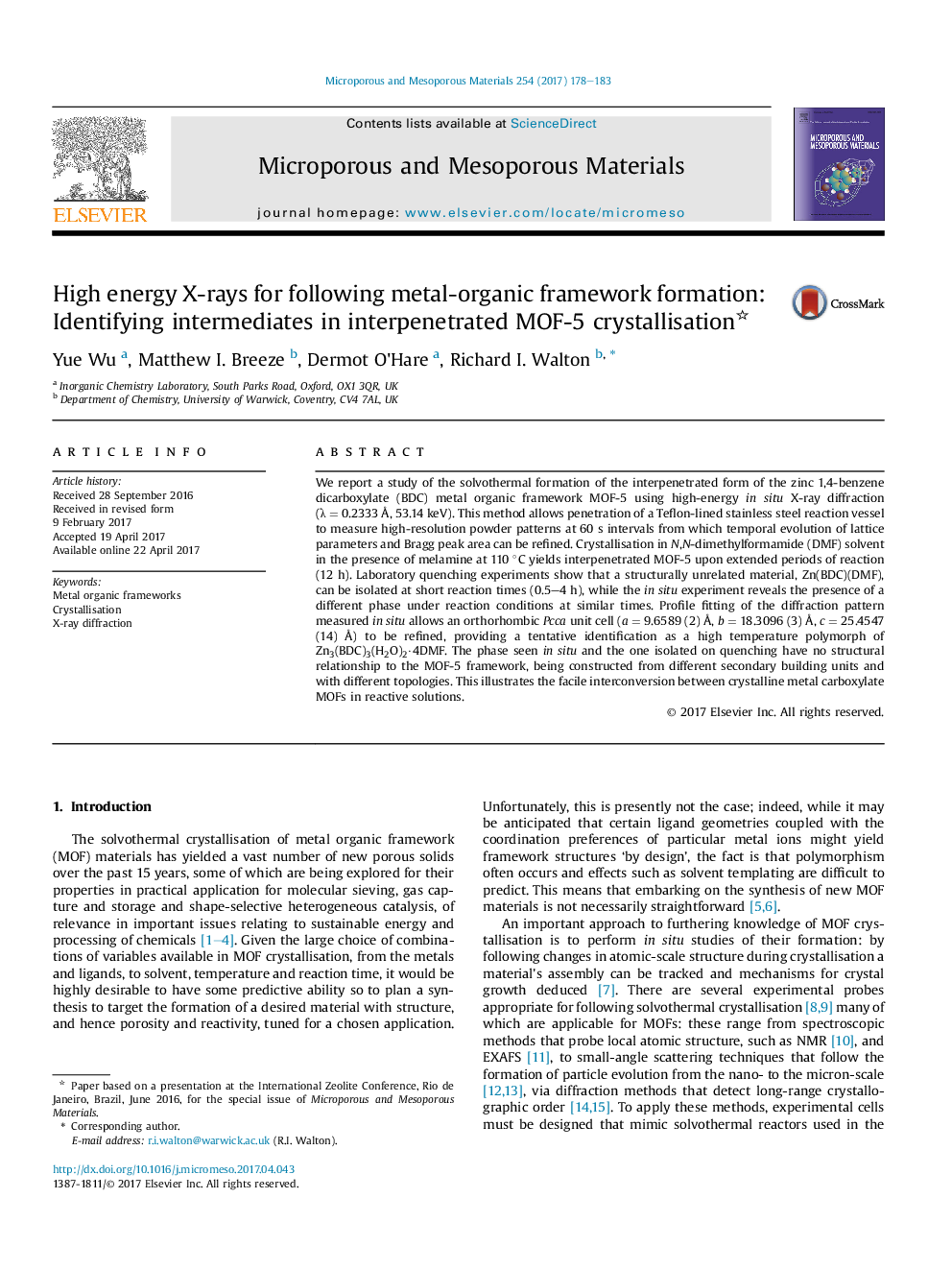| کد مقاله | کد نشریه | سال انتشار | مقاله انگلیسی | نسخه تمام متن |
|---|---|---|---|---|
| 6456563 | 1420405 | 2017 | 6 صفحه PDF | دانلود رایگان |

- High energy X-rays allow in situ XRD from crystallisation in a steel autoclave.
- Full pattern profile fitting provides temporal evolution of lattice parameters.
- Phase identification of an intermediate in a solvothermal solution is performed.
- Interconversion of zinc carboxylates occurs readily under in solvothermal reactions.
- Transient phases appear prior to MOF-5 formation.
We report a study of the solvothermal formation of the interpenetrated form of the zinc 1,4-benzene dicarboxylate (BDC) metal organic framework MOF-5 using high-energy in situ X-ray diffraction (λ = 0.2333 à , 53.14 keV). This method allows penetration of a Teflon-lined stainless steel reaction vessel to measure high-resolution powder patterns at 60 s intervals from which temporal evolution of lattice parameters and Bragg peak area can be refined. Crystallisation in N,N-dimethylformamide (DMF) solvent in the presence of melamine at 110 °C yields interpenetrated MOF-5 upon extended periods of reaction (12 h). Laboratory quenching experiments show that a structurally unrelated material, Zn(BDC)(DMF), can be isolated at short reaction times (0.5-4 h), while the in situ experiment reveals the presence of a different phase under reaction conditions at similar times. Profile fitting of the diffraction pattern measured in situ allows an orthorhombic Pcca unit cell (a = 9.6589 (2) à , b = 18.3096 (3) à , c = 25.4547 (14) à ) to be refined, providing a tentative identification as a high temperature polymorph of Zn3(BDC)3(H2O)2·4DMF. The phase seen in situ and the one isolated on quenching have no structural relationship to the MOF-5 framework, being constructed from different secondary building units and with different topologies. This illustrates the facile interconversion between crystalline metal carboxylate MOFs in reactive solutions.
293
Journal: Microporous and Mesoporous Materials - Volume 254, December 2017, Pages 178-183